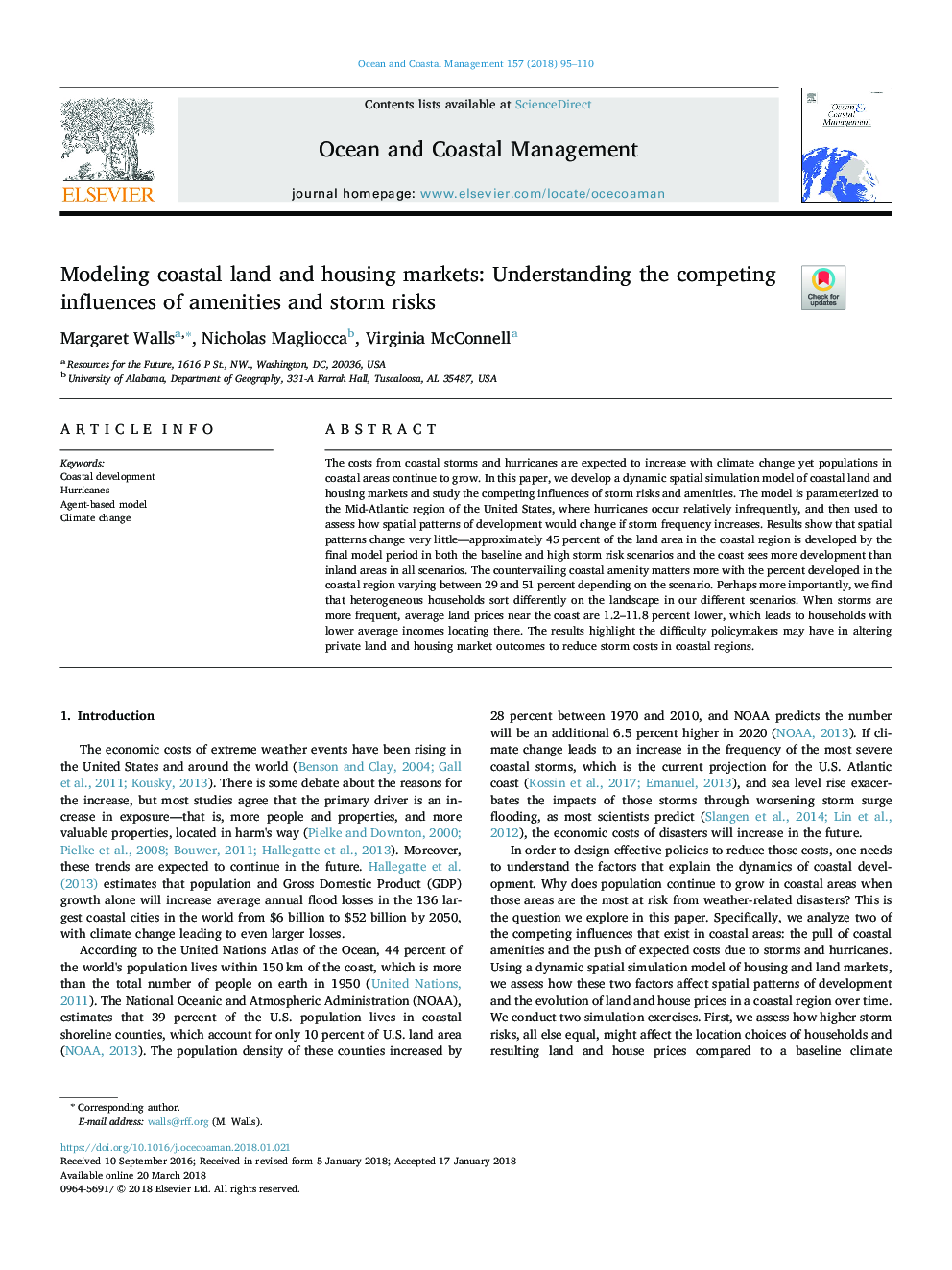| Article ID | Journal | Published Year | Pages | File Type |
|---|---|---|---|---|
| 8060713 | Ocean & Coastal Management | 2018 | 16 Pages |
Abstract
The costs from coastal storms and hurricanes are expected to increase with climate change yet populations in coastal areas continue to grow. In this paper, we develop a dynamic spatial simulation model of coastal land and housing markets and study the competing influences of storm risks and amenities. The model is parameterized to the Mid-Atlantic region of the United States, where hurricanes occur relatively infrequently, and then used to assess how spatial patterns of development would change if storm frequency increases. Results show that spatial patterns change very little-approximately 45 percent of the land area in the coastal region is developed by the final model period in both the baseline and high storm risk scenarios and the coast sees more development than inland areas in all scenarios. The countervailing coastal amenity matters more with the percent developed in the coastal region varying between 29 and 51 percent depending on the scenario. Perhaps more importantly, we find that heterogeneous households sort differently on the landscape in our different scenarios. When storms are more frequent, average land prices near the coast are 1.2-11.8 percent lower, which leads to households with lower average incomes locating there. The results highlight the difficulty policymakers may have in altering private land and housing market outcomes to reduce storm costs in coastal regions.
Related Topics
Physical Sciences and Engineering
Earth and Planetary Sciences
Oceanography
Authors
Margaret Walls, Nicholas Magliocca, Virginia McConnell,
